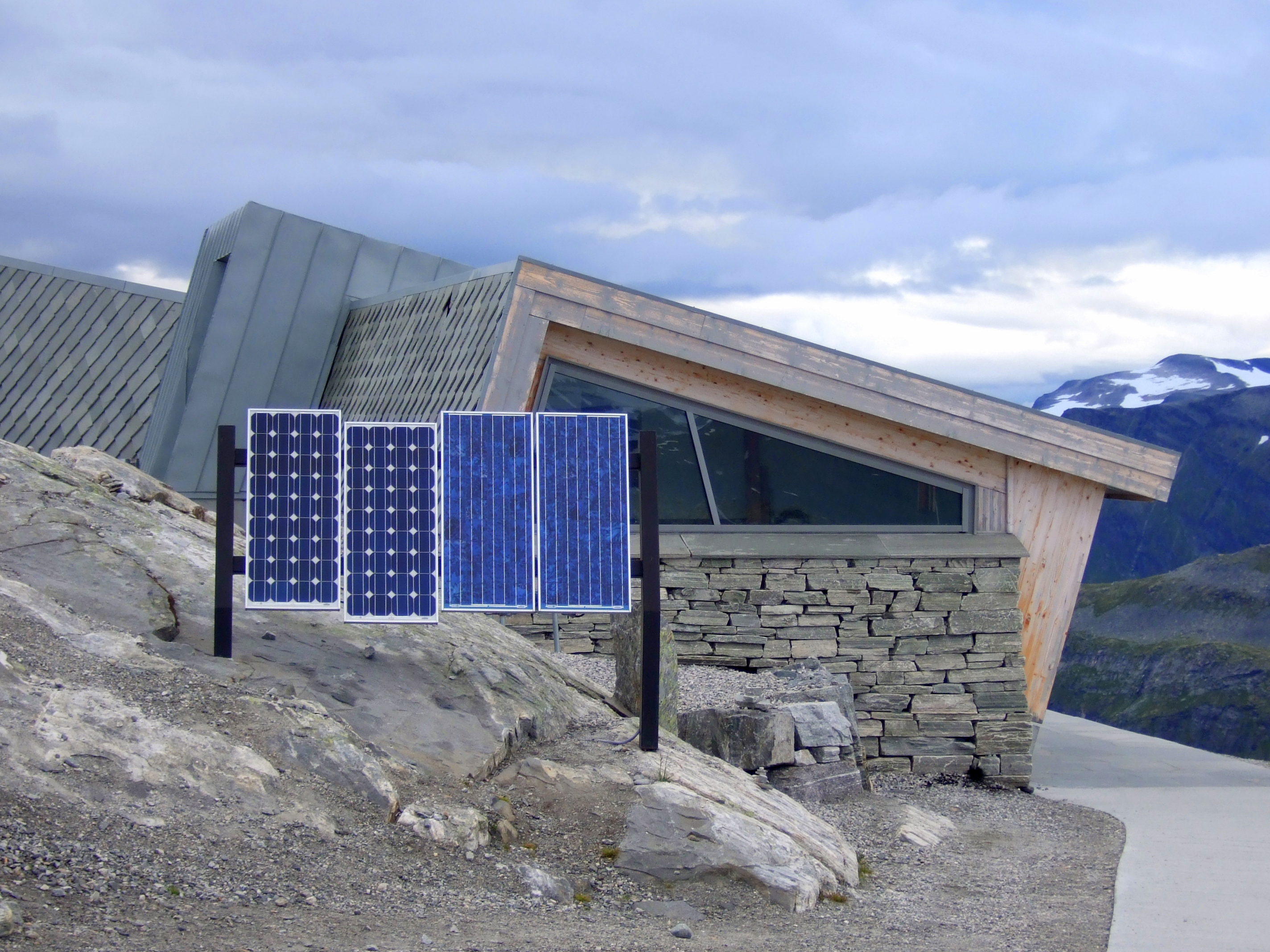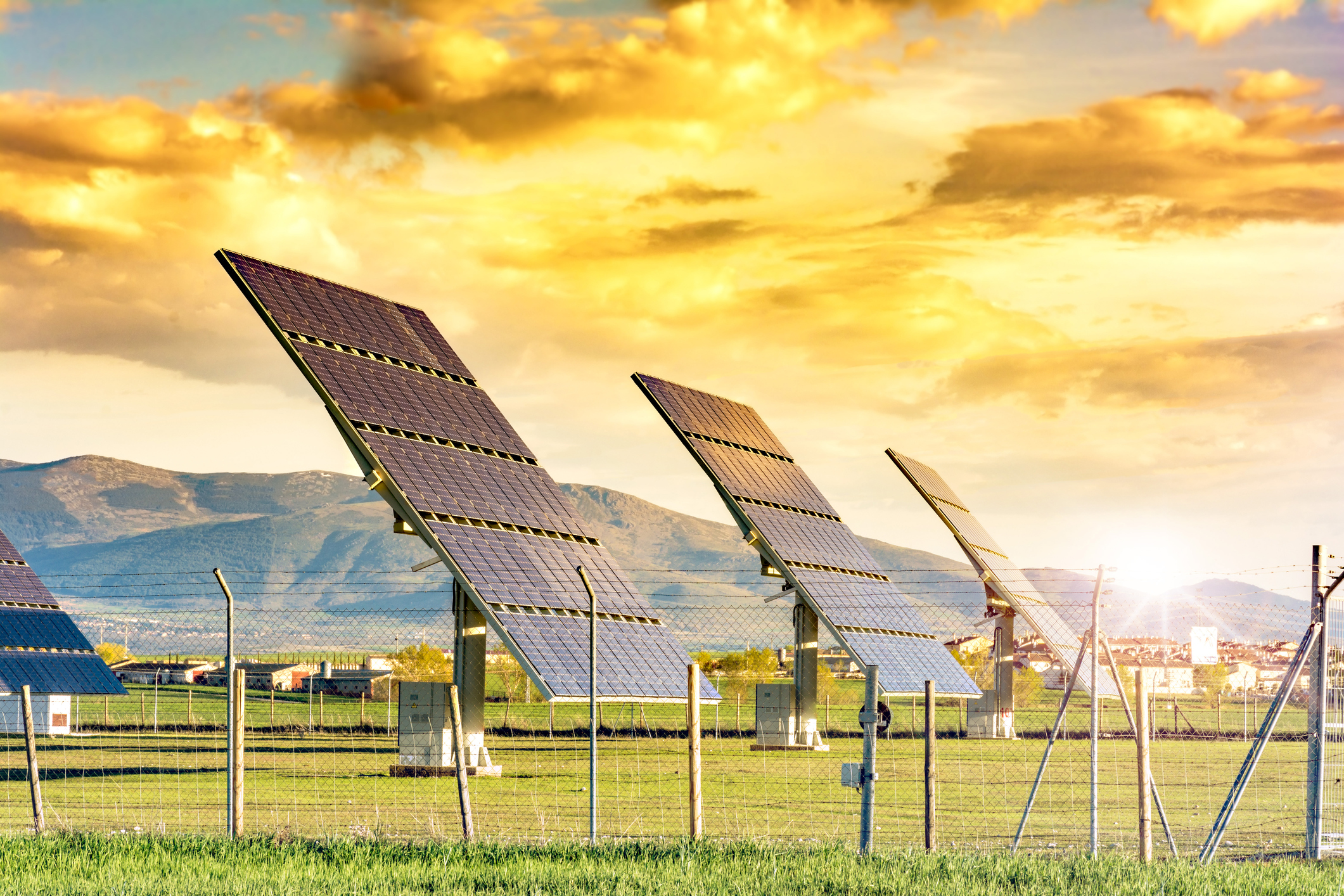Are you doing a solar project?
Modernize can pair you with three to four pros in your area, so you can compare options and save time and money.
We’re used thinking of solar panels as the exclusive domain of rooftops, but many of the most productive installations in the world are a lot lower to the ground. If your home doesn’t have the ideal orientation and slant for solar power, a ground-mounted solar installation may be better than one on your roof. Ditto if you have a lot of shade on your roof.
Ground-mounted installations often have a lot more capacity than ones on the top of your home, too. They’re more well-positioned for automatic tracking systems that follow the path of the sun to get the most out of the light. And since they’re lower to the ground, they tend to cool off a lot faster than high-up rooftop systems. On the flip side, ground-mounts eat up precious lawn space—and you may not like their look as much as rooftop arrays, since they don’t exactly blend in.
Let’s talk about what a ground-mounted solar installation entails—the pros and the cons—to help you decide if a low-to-the-ground solar array is right for your home.
How Much Solar Potential Is in Your Roof, Anyway?
Homes are as unique as fingerprints, so it makes sense that not all of them are ideal spots for solar panels. Several different factors can influence your roof’s capability for solar production, known collectively as its “solar potential.”
For instance, there’s the direction of your home, also called its “orientation.” If you don’t have a roof surface that faces south or west, you won’t have as much potential as other homes. That doesn’t mean you can’t still have solar panels, of course. It just means that they may not produce as much energy as you’d like. And if you’re trying to apply for a solar lease or other programs, your roof may not make the cut. The tilt angle of your roof also plays a part in your home’s potential. Installers can usually account for this, though, by adjusting your racking to achieve the best angle for your solar panels.
The shadiness of your home also factors into the equation. This one’s a bit of a catch-22, since shading your home with trees and foliage can help reduce your cooling needs during the summer, thus making your home more energy efficient. However, shading on the roof isn’t great for a solar installation. Solar panels generate energy when they come into contact with the electrons present in sunlight—so, as you can image, the less sunlight there is around, the less energy they produce.
The timing of the shading makes a difference, too. You probably won’t see a noticeable drop if your panels get sunlight between 10:00 a.m. to 4:00 p.m., the most productive parts of the day. You can also opt for amorphous silicon cells in your panels instead of mono- and polycrystalline silicon, but these are slightly less efficient than other types.
A qualified solar installer should have lots to say about your home’s orientation, roof tilt, shading, and other matters that will affect your solar output. But if you want to start gauging that potential yourself, you can use an online tool, like our ModSun Solar Panel Cost Calculator, to see how much sunlight your roof usually gets—and how much energy potential you have.
Find the Right Contractor for Your Solar Project
Whether you’re ready to begin your project now or need some expert advice, our network of contractors are here to help. With a few simple questions, we’ll find the best local professionals for you

Adjusting Panel Tilt Can Make a Big Difference
One of the big benefits of a ground mounted array—besides making up for lost output—is that ground-mounted arrays can be adjusted more easily to account for daily or seasonal variances in the angle of the sun.
There are two types of ground-mounted arrays: standard ground mounts and pole mounts. Standard ground mounts are attached to a racking system driven directly into the ground. Pole mounted arrays are positioned on an elevated pole that lifts them up a few inches to a few feet above the ground. Both can be repositioned seasonally to adjust the panels’ tilt, which adds nominal productivity to an installation, since the sun’s position in the sky changes throughout the year.
Pole mounted panels also make great candidates for additional tracking systems, which automatically adjust panel angle as the sun moves through the sky during the day. Tracking systems have been quoted at 25 percent more productive than fixed-angle systems, so adding this ability to your array can definitely give you a little boost in energy output.
Other Advantages (and Some Disadvantages) to Ground Mounts
A lot of the decision to go for a ground mount depends on your home and your needs, though. For instance, if you live in a very snowy climate, you may need to dig out your panels when there’s a snowstorm so that the cells can still absorb sunlight and keep generating energy. On the other hand, when it’s time to reroof your home, you won’t have to pull down the panels first to get the job done. Likewise, some installers believe that ground mounts are more productive than comparable rooftop installations, since they cool off easier during the night (heat can decrease solar cell efficiency, if you can believe it).
Then again, you’ll have to devote space to a ground mount, which means less room for a lawn, garden, or other outdoor features. And some homeowners just plain don’t like the way they look. However, you can potentially install a much larger array using a ground mount than you can with a rooftop, since there’s fewer limitations on your space.
All in all, it’s a personal decision, but talking to a qualified solar installer about your home’s specifics will definitely help. So if you’re starting to get serious about solar, your best bet is to connect with an installer and get started budgeting and planning a new solar installation today. Whether you go up high or down low, solar’s one of the smartest way to save on your energy costs, on the balance!
Find the Right Contractor for Your Solar Project
Whether you’re ready to begin your project now or need some expert advice, our network of contractors are here to help. With a few simple questions, we’ll find the best local professionals for you
Reviews from Real Homeowners
Welcome to Homeowner Resources! We are the Modernize blog. Modernize pairs more than 3 million homeowners a year with pre-vetted contractors in their area. This blog started because we believe homeowners should know everything about their homes, from how their HVAC works to which front door colors they might love. On Homeowner Resources, you can find information on every part of your home, right down to how you can negotiate with contractors to get the best price. Here's more about the blog.
Need a contractor? Learn more about how Modernize finds the right pro for you.



